Honma
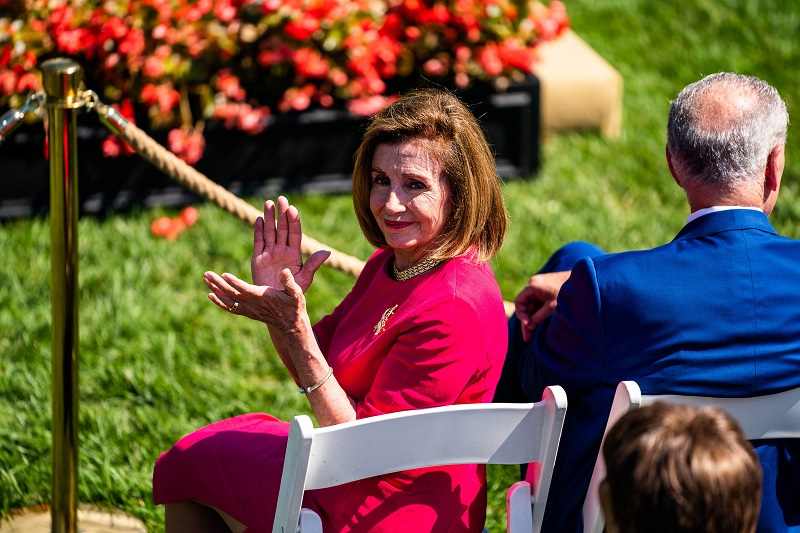
The most popular ramen, Special Shio (1,300 yen)
18:05 JST, May 16, 2024
There’s a particular ramen restaurant near Komagome Station on the JR Yamanote Line. The owner, who hails from the ramen kingdom of Yamagata Prefecture, puts time and effort into serving a wide variety of ramen dishes, exemplifying the spirit of hospitality. The name of the restaurant is Homemade Noodles Honma. The ticket machine, which is also the menu, always has around 10 kinds of ramen on offer, so a tough decision is guaranteed when choosing which to try. But you can’t go wrong; every dish is made with carefully chosen ingredients. I visited this restaurant which had always been on my mind and interviewed the owner.
Komagome is a place that I have fond memories of from my youth. I lived there for about three years until my second year of college. Walking down Azalea Street from the east exit of Komagome Station, I found that even after almost 40 years, it still had the atmosphere of the old days. New stores had popped up, but some of the old ones remained, which I was happy to see.
-
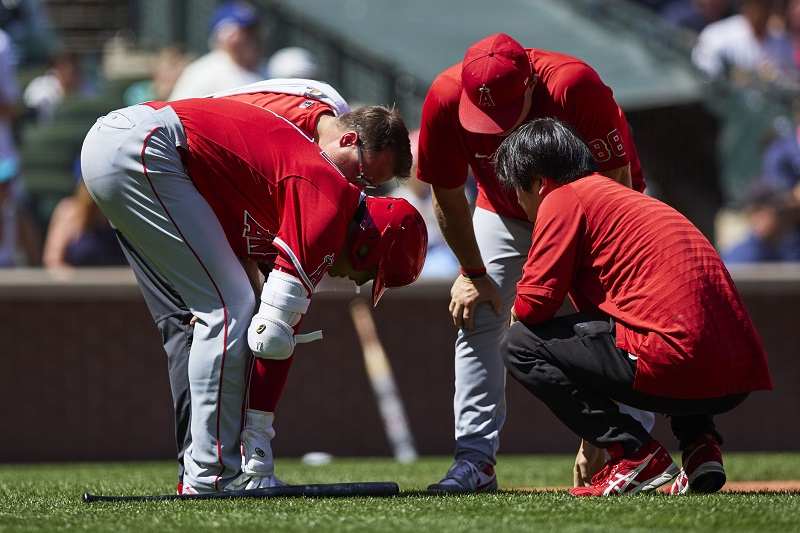
The exterior of “Honma” establishes a refined atmosphere.
-

Azalea Street seen from the east exit of JR Komagome Station
-
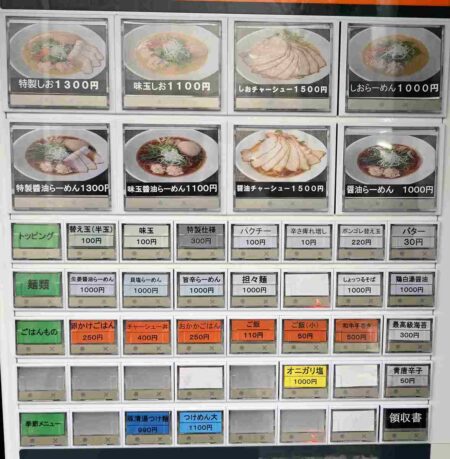
Ticket vending machine with a variety of dishes
Homemade Noodles Honma is located in a residential area past Azalea Street, a five- to six-minute walk from the station.
The first thing you notice is that the restaurant itself is beautiful. It was originally a soba noodle store, and the U-shaped counter is visible through the glass of the entrance doors. The spacious, high-quality interior is reminiscent of today’s small, expensive Japanese cuisine — kappo — restaurants. The appearance alone is enough to conjure the taste of ramen.
-
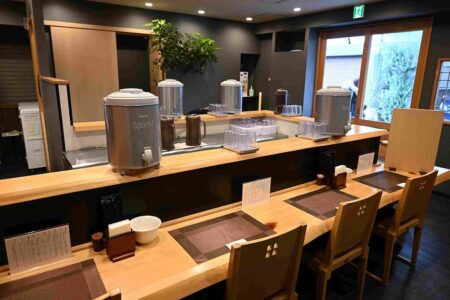
U-shaped cypress counter that seats 10 people
-
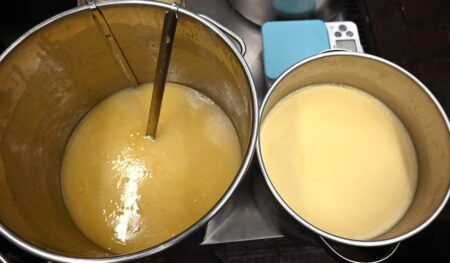
The chicken broth served during business hours (left) and the one kept in the refrigerator
-
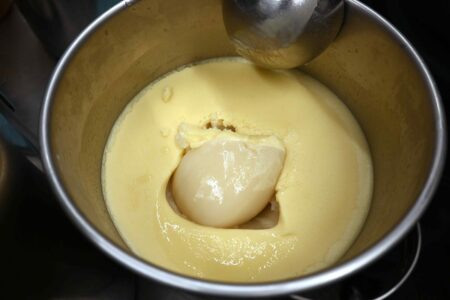
Chicken broth which had been chilled in the refrigerator and scooped with a ladle
-
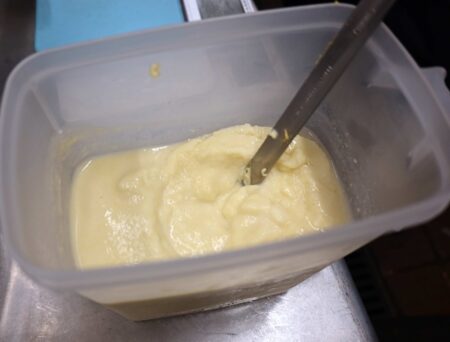
Vegetable potage
I was greeted warmly by the friendly owner, Eikichi Honma (41), and ordered the most popular dish, Special Shio (¥1,300). The soup is a combination of chicken paitan (thick broth) and vegetable potage, called “veggie pota” among Japanese.
“This is our chicken broth,” Honma said from the spacious kitchen while showing me the broth in a large cylindrical pot. It looked thick and full of collagen. Honma brought out another chicken broth pot from a refrigerator and placed it next to the first one. When he scooped it out with a ladle, it was a pulpy, jelly-like mass. Before serving, the broth was brought to room temperature, put in a single-handled small pot to which the vegetable potage was added, and heated up.
-
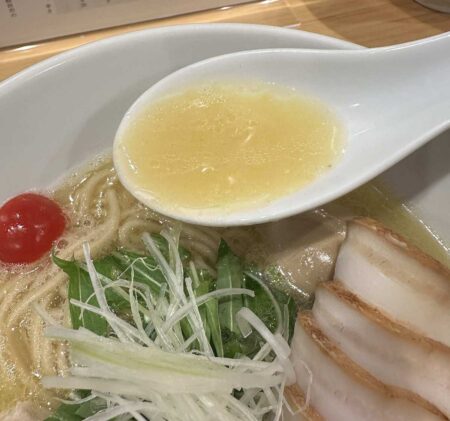
Soup with the rich umami taste of chicken and vegetables
-
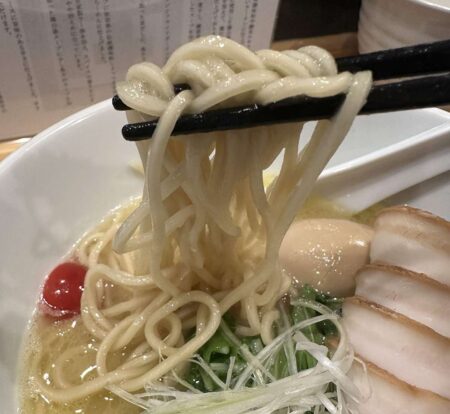
Homemade noodles that go well with the soup
-
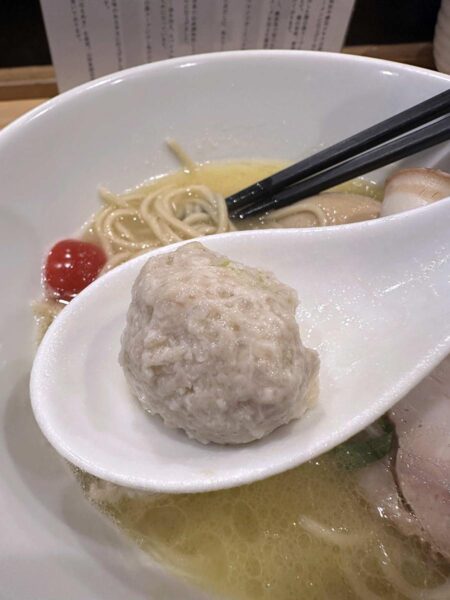
There are two delicious homemade chicken meatballs in a ramen bowl
-
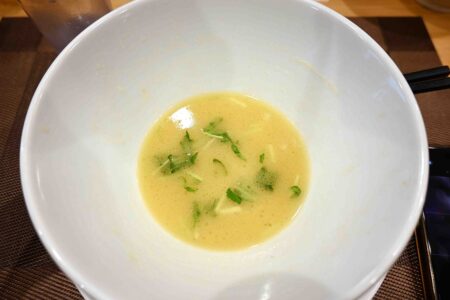
The soup left at the end is a fine potage.
-
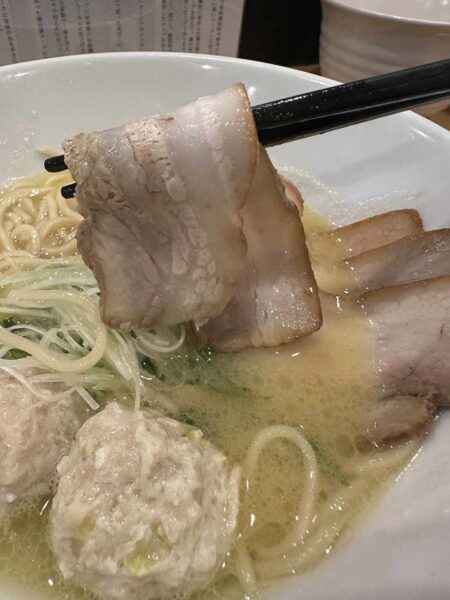
Homemade pork belly chashu are lightly roasted before serving
The completed ramen was as beautiful as the restaurant. The soup was mild, thick and rich but not too heavy. The umami of the chicken and vegetables had a strong flavor but was properly balanced. Honma explained, “For the chicken broth, we use a large amount of whole Daisen chicken and their bones, and for the vegetable broth, we use ‘Inca no mezame’ potatoes from Hokkaido, onions from Awaji Island, and fresh cream.”
-
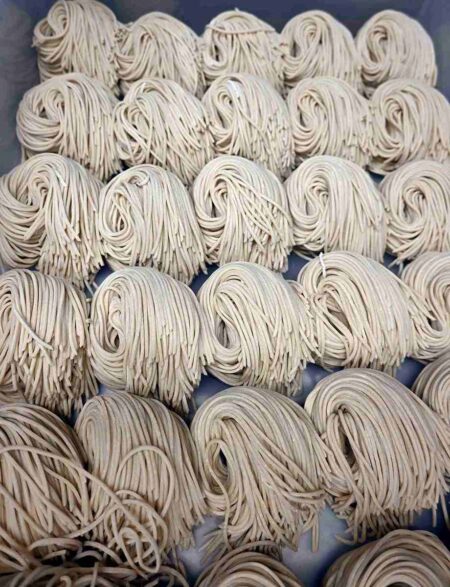
Medium-thin homemade noodles using Hokkaido wheat
-
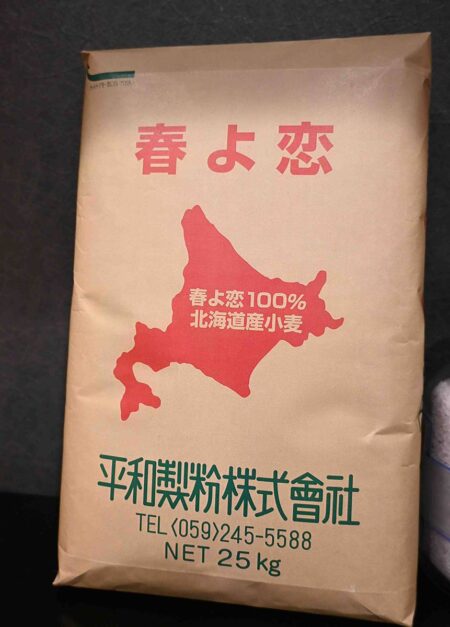
Hokkaido wheat “Haruyokoi” used for the noodles
-
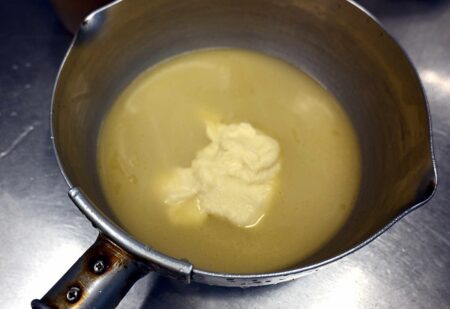
Heated chicken broth and vegetable potage in a single-handled pot
-
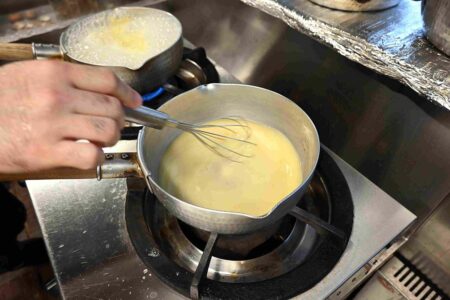
Stirring the soup
The homemade noodles, which are mentioned in the restaurant’s name, are medium-thin noodles made from “Haruyokoi” flour produced in Hokkaido. The noodles are made daily using a noodle-making machine at the rear of the kitchen. “They are served after being laid overnight,” said Honma. That’s why the noodles have a brownish tinge. The process removes the water and gives the noodles a soft, glutinous texture. The noodles balanced perfectly with the soup and were truly delicious.
The shio (salt) ramen (¥1,000) is topped with chicken meatballs, mizuna (potherb mustard), white onion, and mini tomatoes. The special version had homemade pork belly chashu and ajitama (seasoned egg) added. The mizuna and mini tomatoes added color and a refreshing accent to the dish.
The soup left at the bottom of the bowl was more like a potage soup served at a Western restaurant than a ramen soup. I finished it up and enjoyed every last drop.
-
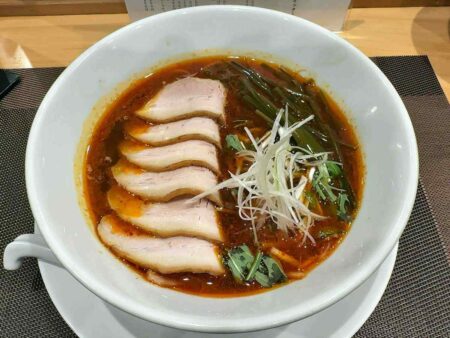
The spiciest level of umakara ramen (1,000 yen) is spicy, tasty and sure to make you sweat.
-
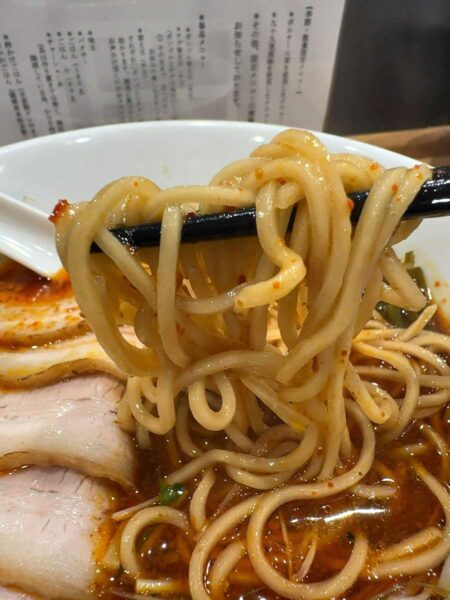
Noodles covered in a very spicy soup
-
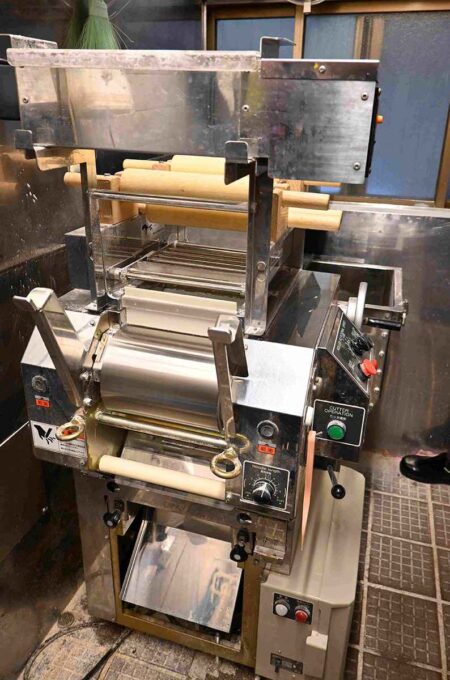
The noodles are made with a machine manufactured by Yamato Seisakusho, a well-known manufacturer in the ramen industry.
The umakara (tasty and spicy) ramen (¥1,000) that I ordered on my first visit to the restaurant as an ordinary customer was also very tasty. The soup of that ramen is made with seafood broth containing mackerel flakes, urume fish flakes, bonito flakes, dried shiitake mushrooms, Korean chili peppers, and a little chicken broth. I ordered the spiciest of the three levels — “very hot and spicy” — and ate it while sweating, attracting the attention of the customer next to me.
Growing up eating ramen
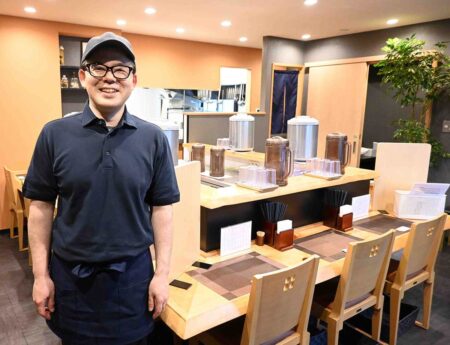
The owner, Eikichi Honma, hails from Yamagata Prefecture, the ramen kingdom.
But why are there so many types of ramen on the menu? In early March, when I interviewed the owner, you could order chicken paitan and umakara ramen, shoyu (soy sauce), chicken paitan shoyu, onigari shio (onion and garlic, salt), clam salt, shottsuru, tantan spicy ramen, tsukemen (dipping noodles), and ginger shoyu. Depending on the season, additional items, such as mushrooms, soy milk, clams, and pork-like chicken broth Honma-ke ramen, are added to the list.
“Actually, I’m from Sakata in the Shonai region of Yamagata Prefecture and grew up eating ramen from a young age,” Honma said. Ramen culture is so deeply rooted in Sakata that it ranked first in last year’s “General Election for Local Ramen in Japan.” There are many ramen eateries in the area, and a lot of them offer delivery services. Ramen is also a way to welcome and entertain customers. For Honma, who grew up in that kind of environment, it was “natural” to offer a variety of dishes and homemade noodles. Honma smiled and said, “Customers are happy when I offer a wide variety of dishes, and it makes me happy too.”
However, this requires a lot of time and effort. Because each noodle is made individually, customers must wait longer during peak hours. He said that the current 10 or so types of ramen are the limit of what he can offer.
-
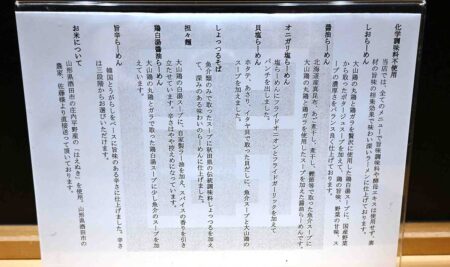
Descriptions of the various ramen noodles placed on the counter
-
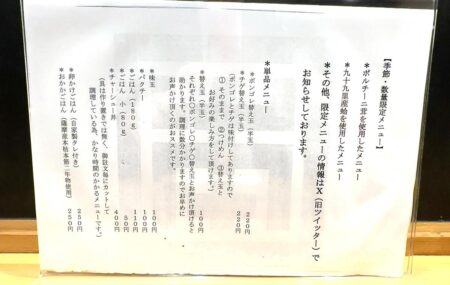
Other menu options, such as noodle seconds and rice
-

There are rules for waiting in line during busy hours.
After graduating from college, Honma worked at a major ramen chain for about 11 years. He even became the manager. But as he worked for the company and got promoted, he gradually moved away from the front line. Wanting to make his own ramen and bring joy to his customers, he quit his job and opened Homemade Noodles Honma in May 2019. The U-shaped counter, which seats 10, is made of Japanese cypress. The popularity of the restaurant has steadily increased; the number of customers didn’t even wane during the COVID-19 pandemic, despite operating hours being shortened at the request of the Tokyo Metropolitan Government. Customers have been increasing constantly since the restaurant opened.
Honma’s connections with his suppliers have expanded, and the number of ingredients he purchases directly from them has increased too. He now asks a farmer in Yabukawa, Morioka, to grow the corn “Dolce Dream” used in his cold corn ramen, and he sources his clams directly from Kujukuri in Chiba Prefecture. The rice used at the restaurant is grown in the Shonai region, where his hometown is located.
“I’d like to bring up the next generation of staff who can manage the restaurant or become independent themselves in the future,” Honma said of his near future goals.

Homemade Noodles Honma
Located at 5-58-7 Hon-Komagome, Bunkyo Ward, Tokyo. Lunch time is from 11:00 a.m. to 3:00 p.m. and dinner time is from 6:00 p.m. to 9:00 p.m. Open only for lunch on Sundays, from 11:00 a.m. to 3:30 p.m. Closed on Tuesdays. For more information, visit the restaurant’s official X (@jikaseimenhonma ).

Futoshi Mori, Japan News Senior Writer
Food is a passion. It’s a serious battle for both the cook and the diner. There are many ramen restaurants in Japan that have a tremendous passion for ramen and I’d like to introduce to you some of these passionate establishments, making the best of my experience of enjoying cuisine from both Japan and around the world.
Japanese version
駒込でラーメン王国の味「自家製麺ほんま」、庄内出身の店主が作る美しい一杯
"JN Specialities" POPULAR ARTICLE
JN ACCESS RANKING

























